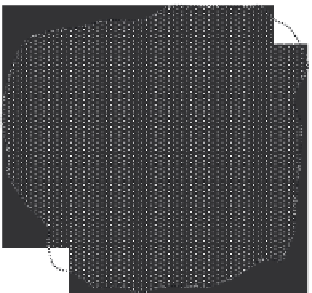Environmental Engineering Reference
In-Depth Information
crystalline form of these minerals includes haematite, goethite, gibbsite, boehmite, ana-
tase, and quartz. They differ from layer silicate minerals (secondary minerals) in that their
surfaces essentially consist of broken bonds. In an aqueous environment, these broken
bonds are satisied by the OH
−
groups of disassociated water molecules. The surfaces
exhibit pH-dependent charges, i.e., the surfaces have variable charged properties.
2.5.3.5 Carbonates and Sulfates
The most common carbonate mineral found in soils is calcite (CaCO
3
). Some of the other less
common ones are magnesite (MgCO
3
) and dolomite (CaMg(CO
3
)
2
). Gypsum (CaSO
4
∙2H
2
O)
is the most common of sulfate minerals found soils.
2.5.4 Soil Properties Pertinent to Contaminant Transport and Fate
The reactions between contaminants and soil during the time when the contaminant is in
contact with a soil will determine its transport through the soil, and also its fate. Figure
2.11 shows a simpliied schematic of an inluent contaminant leachate entering a soil unit.
Interaction between the various contaminants in the leachate stream with the exposed
surfaces of the soil particles of the various soil fractions will ultimately determine the
transport characteristics and fate of the contaminants in the leachate stream. The control-
ling factors involved, other than the properties and functional groups (chemically reactive
groups) of the contaminants, are listed in the diagram.
Porosity and void
space continuity
Unit
volume
“Exploded” view of unit of
soil mass
Density
Abiotic reactions between
functional groups of
contaminants and surfaces
of soil solids
Soil microstructure and amount of
exposed surface area
FIGURE 2.11
Schematic diagram showing the major physical soil factors (in italics) involved in controlling contaminant
transport through the unit soil mass.




















































































































Search WWH ::

Custom Search